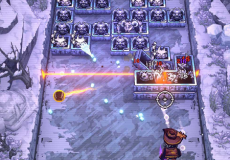
Blood Mall
Advertisement
Blood Mall is a first-person horror experience set inside a shopping complex that has turned into a trap. The player takes the role of an individual who enters an abandoned mall and discovers that something violent has occurred. The objective is simple—explore, survive, and find a way out. The environment changes as the player progresses, with each section revealing new evidence of what happened and increasing tension. Instead of relying on combat, Blood Mall builds its structure around movement, sound, and awareness.
Advertisement
Similiar games
Blood Mall is a first-person horror experience set inside a shopping complex that has turned into a trap. The player takes the role of an individual who enters an abandoned mall and discovers that something violent has occurred. The objective is simple—explore, survive, and find a way out. The environment changes as the player progresses, with each section revealing new evidence of what happened and increasing tension. Instead of relying on combat, Blood Mall builds its structure around movement, sound, and awareness.
Setting And Structure
The mall functions as both location and system. Its layout is familiar—shops, corridors, and maintenance areas—but gradually becomes restrictive. The design uses repetition and distortion to create unease. What first appears as open space begins to feel like a maze.
Core elements of the experience include:
- Exploration: moving through areas while collecting visual and audio clues.
- Investigation: reading signs, headlines, and notes that reveal fragments of the event.
- Observation: using lighting, noise, and perspective to anticipate danger.
- Escape: finding alternate routes as doors lock and passages change.
- Survival: avoiding encounters with the creature that patrols the halls.
These components work together to turn ordinary spaces into obstacles, forcing the player to navigate with limited information.
Gameplay And Progression
Blood Mall follows a loop of exploration, discovery, and pursuit. The player begins in a quiet environment and slowly uncovers the signs of destruction—broken displays, abandoned stores, and sudden alarms. As they move deeper, the mall becomes unstable, both physically and psychologically. The progression relies on recognition rather than direct guidance: the player learns through trial and memory. Each failed attempt teaches new routes and timings. There are no weapons or upgrades—progress depends entirely on reading the environment and reacting to what it presents.
Themes And Interpretation
The game examines how safety transforms into threat when familiarity is disrupted. The mall, designed for movement and consumption, becomes a closed system with no exit. The player’s role shifts from consumer to survivor, mirroring a loss of control within an artificial space. Blood Mall also reflects on repetition and routine—the same corridors must be crossed multiple times, but each return changes context. The environment remembers previous actions, forcing adaptation. Through this, the game turns repetition into tension, showing how predictability can hide danger.
Discuss Blood Mall


















